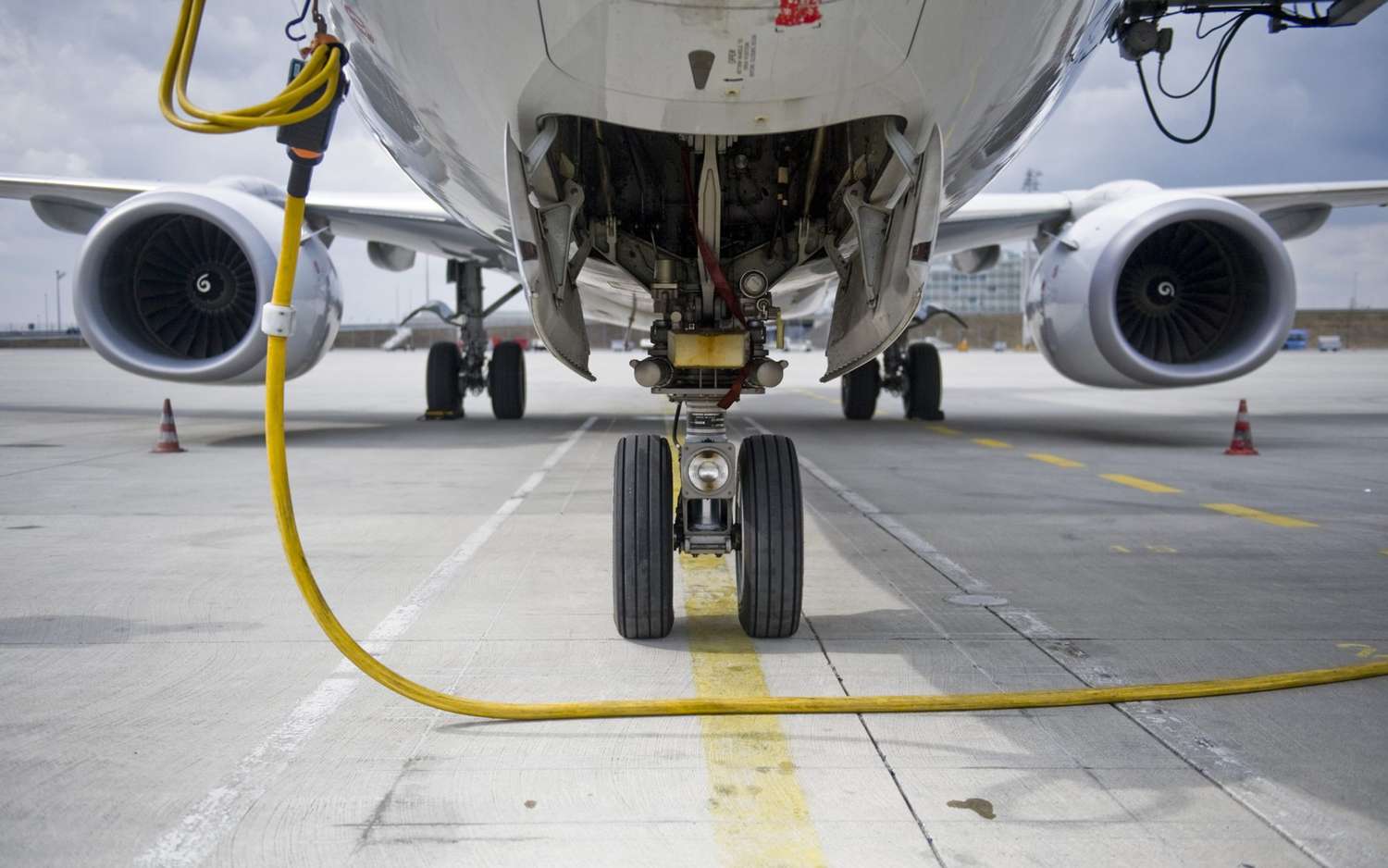Ever gazed at the sky, mesmerized by the ballet of planes swirling around giant metal birds? The world of airports, with their intricate choreography of takeoffs and landings, is a marvel of modern engineering.
But where do these majestic machines find their wings?
Buckle up, as we embark on a journey to discover the airports boasting the most runways, the veritable runway royalty of the aviation world.
If you’re short on time, here’s the quick answer: Chicago O’Hare International Airport (ORD) takes the crown with an impressive eight runways. However, the race for runway supremacy is far from over, with several contenders vying for the title.
This article delves deeper into the fascinating world of airport runways.
We’ll explore the reasons behind the need for multiple runways, uncover the challenges and benefits of these sprawling landing strips, and delve into the unique characteristics of the airports that hold the top spots.
So, fasten your seatbelts and get ready to take off on an informative and engaging exploration of the airports with the most runways!
Beyond Numbers: Why Multiple Runways Matter
Traffic Flow and Efficiency: Keeping the Skies Moving
This allows them to efficiently manage heavy traffic flow and minimize congestion issues like grounded planes and long waits.
Strategically oriented runways prevent aircraft backlogs and long queues for departure and arrival procedures.
Shorter taxi times, quicker gate turnarounds, and lower emissions from reduced idling make airports greener and airports operations more sustainable.
Safety and Redundancy: Minimizing Risks and Delays
In the unlikely event of temporary runway closure due to disabled planes, debris, maintenance issues or accidents, backup runways keep operations running safely and smoothly.
This prevents or drastically cuts flight delays, diversions and cancellations leading to better on-time performance and lower costs for airlines and passengers.
During poor weather, multiple runways allow for flexible flight scheduling and spacing for safe landings.
For example, closely spaced parallel runways with precision instrument landing systems can independently handle approaches even in low visibility.
Weather Resilience: Adapting to the Elements
Airports in storm-prone regions are designed with multiple runways aligned in different directions. This allows for safe takeoffs and landings under changing wind and visibility conditions.
High winds often require commercial jets to takeoff and land into the wind so crosswind runways provide options to avoid strong gusts from the side.
Unfavorable crosswinds cause higher fuel usage plus difficult maneuvering and braking challenges. In icy climates, teams can clear specific runways and taxiways more frequently for safer winter operations as backups remain open.
Passenger Experience: Shorter Waits and Smoother Travel
Passengers benefit from shorter onboard times during taxiing and reduced flight delays at multi-runway airports.
Faster aircraft turnaround gets flyers to the gate quicker while less tarmac congestion prevents deplaning holdups at the arrival gate.
Streamlined ground movements means travelers spend less time in stuffy cabins anxiously waiting to exit. With parking gates and terminal access nearby multiple runways, getting to and from planes is made easier.
Flyers connect more reliably to other flights while minimal cancelations help reward travel loyalty programs.
Cargo Logistics: The Backbone of Global Trade
Major cargo hubs rely on multiple large runways to sustain round-the-clock freight operations.
The mass of jumbo jets hauling time-sensitive goods and cold chain products need reliable infrastructure to meet inbound scheduling demands.
Companies avoid demurrage charges if clearance formalities and quick distribution of merchandise is supported by 24/7 multi-runway airports.
Fast connections to trucks, trains and sea ports adds to efficient door-to-door supply chains.
The Runway Champions: A Global Tour
Denver International Airport: Mile-High Majesty
While Denver boasts six operational runways, it technically has eight total runways. However, two of them are designated for emergencies only, hence not included in the typical “most runways” count.
Dallas/Fort Worth International Airport: Texan Titans
As a central U.S. aviation gateway, Dallas/Fort Worth International Airport contains an astonishing 7 runways — including the longest runway in Texas at over 2 miles long. Linking the metropolitan regions of Dallas and Fort Worth, DFW airport saw over 76 million passengers traverse its terminals in 2021.
Hartsfield–Jackson Atlanta International Airport: Gateway to the South
With 5 lengthy runways stretching over 25,000 combined feet, Hartsfield–Jackson Atlanta International Airport (ATL) has earned the crown as the world’s busiest passenger airport for over 22 consecutive years.
Beijing Capital International Airport: Dragon’s Landing Pad
As the aviation gateway to China’s bustling capital, Beijing Capital International Airport contains an impressive 4 runways to meet surging travel demand.
Having handled over 32 million passengers in 2021, Beijing’s airfield enables over 1,200 flight operations daily.
With China’s economy forecasted to expand in coming years, Beijing’s first-rate runways stand ready to serve swelling passenger volumes placing it among the world’s elite landing strip owners.

The Future of Runways: Innovation and Sustainability
Parallel and Independent Operations: Maximizing Capacity
As air traffic continues to increase, airports are looking for innovative ways to maximize their runway capacity.
One promising technology is parallel and independent operations, which allow aircraft to take off and land simultaneously on parallel runways spaced closer than currently allowed.
This increases efficiency and enables more aircraft movements per hour.
Short-Runway Technologies: Taking Off in Compact Spaces
Not all airports have acres of space to construct long runways. To enable airline service to small and challenging airports, Boeing and Airbus are developing short runway technologies to allow aircraft to safely take off and land using runways under 5,000 feet.
Automation and Robotics: The Future of Air Traffic Control
While still largely conceptual, automation and AI promise to revolutionize air traffic management in the coming decades.
Sophisticated algorithms can potentially optimize routing and sequencing better than humans, improving safety, efficiency and emissions.
NASA is currently testing an Air Traffic Management eXploration (ATM-X) automation platform that has coordinated the safe arrival of over 35,000 simulated flights at select airports. Researchers estimate advanced automation could save $38 billion in fuel costs in the U.S. by 2030, if adopted.
Smart Runways and Data-Driven Decisions
Runways are getting smarter. Cutting-edge sensor networks and IoT connectivity empower airports with real-time insights on runway usage and conditions. This enables data-driven decisions to optimize traffic flows, dispatcher quicker and improve safety.
Beyond the Runway: Additional Factors Influencing Airport Capacity
Terminal Infrastructure and Passenger Flow
The size and layout of an airport’s terminals play a major role in determining passenger capacity. Larger, more modern terminals with multiple levels and efficient design can accommodate far more travelers than outdated facilities.
Air Traffic Control Systems and Efficiency
The technology and protocols used by an airport’s air traffic control staff also affect aircraft movement capacity.
More advanced systems like NextGen in the U.S allow controllers to safely reduce separation between aircraft using GPS and automated tracking.
This lets airports handle more takeoffs and landings within the same airspace. However, many countries still use outdated ATC systems, constraining capacity.
Geographical and Weather Considerations
An airport’s physical location and climate impacts its capacity too. Nearby terrain like hills or bodies of water can limit runway construction.
Adverse weather like fog or thunderstorms often forces airports to reduce flight schedules.
Economic and Political Factors Shaping Growth
An airport’s growth is also shaped by broader economic and political forces. Expanding demand from a region’s rising incomes and air travel needs often spurs airport investments.
However, recessions may halt expansion plans. Political considerations may also promote or limit airport projects.
The Evolving Landscape of Air Travel
Ongoing shifts in aviation technology and passenger expectations are also changing airport needs.
The rise of new midsize jets like the Airbus A220 and Boeing 737 MAX have increased point-to-point flights to secondary cities. This creates demand for more direct routes and gates.
Additionally, passengers now expect amenities like luxury lounges and fast wi-fi. Adapting to these trends requires long-term planning by airport managers.
Overall, the airport capacity equation depends on an array of logistic, technological and socioeconomic factors.
Conclusion
While the quest for the most runways continues, the true measure of an airport’s success lies beyond mere numbers.
It’s about efficiency, safety, and a commitment to responsible travel. As we navigate the skies of the future, let’s remember that the runway is just the beginning.
It’s the journey, the connections we forge, and the respect for our planet that truly define our aviation adventures.






